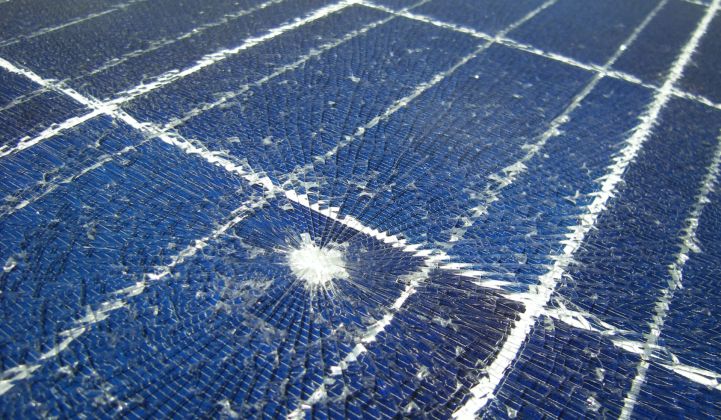Let’s be clear: the Section 201 trade case now under consideration at the U.S. International Trade Commission (ITC) is about jobs, plain and simple. If the petitioners get what they want, tens of thousands of American solar workers will lose their jobs.
This case, filed with the ITC by two foreign-based solar companies, both deeply in debt, is a last-ditch effort at a bailout. It could halt tens of gigawatts of U.S. solar installations through 2022. But most importantly, it will cost 88,000 Americans their jobs.
And for what reason will those American families have to suffer? To revive two companies that couldn’t make it in a thriving industry, two companies that have benefited from federal and state grants and several trade decisions already, two companies owned by Chinese and German entities.
And it gets more insidious than that. The ones that stand to gain most are not even the companies themselves, but Wall Street hedge funds and other investors trying to make good on bad investments.
SQN Financial, which is keeping Suniva afloat just for the duration of this case, previously requested more than $50 million from the Chinese to kill the case. Meanwhile, one of SolarWorld’s largest shareholders is a Qatari investment arm.
Both made bad bets in investing in Suniva and SolarWorld. Now, they want the ITC to impose tariffs and price floors to make their bad investments appealing to another buyer, so they can get their money back. That’s the plan.
The irony is that for the few hundred jobs that might be saved by propping up these two companies -- and to be clear, I care deeply about those individuals and the challenges they are facing -- it could decimate many thousands of good U.S. manufacturing jobs across the various solar energy segments. Jobs in racking systems, trackers, steel, electronics and more are at risk because of this case.
The threat is real. As anyone in this industry knows, changing the economics of solar -- by doubling the price of modules as requested by the petitioners -- will set back the solar industry, making it much harder for solar to compete against other fuels.
The other side would have you believe that adding costs, plus reducing capacity additions, equals more jobs. That’s the equation Suniva’s lawyers applied in a paper they released. Don’t be fooled by this fuzzy math.
To combat the threat from this trade case, members of the solar industry need to act now. SEIA has led the effort to defend our industry and its workers. But we can’t win this fight without you.
Together, we must protect solar companies in the U.S. providing hundreds of thousands of good jobs.
We can stop this ill-conceived effort to prop up underperformers -- and with the right policies in place, U.S. solar capacity will triple in size by 2022. By that time, more than 300,000 solar workers will be employed.
If we can’t stop this case, we may see a lot of solar workers, including many in manufacturing, in unemployment lines. And that is a bad scenario for just about everyone.
***
Abby Hopper is the CEO of the Solar Energy Industries Association.
Editor's note: You can read the SEIA economic analysis on jobs here and the Suniva/SolarWorld economic analysis here.



